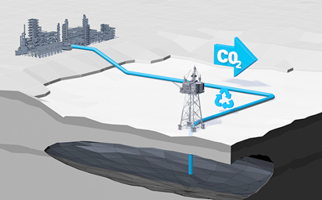· Operators continue to invest in equipment to optimise production and lower emissions
· Micro-bubbles and methane-sensing drones are examples of these innovative solutions
· More than 100 brand-new technologies were highlighted in latest survey
Tech-savvy operators are using an impressive array of smart tools and techniques to optimise production, including from tiebacks, and cut emissions in the North Sea, a new report from the North Sea Transition Authority (NSTA) shows.
The Technology Insights Report highlights groundbreaking tools and services which have been proven to drive efficiencies in areas such as well drilling and construction, subsea systems, facilities management, digital and data and net zero. It also features technologies which have been piloted or are being progressed towards field trials.
Insights were gathered from the technology section of the UKCS Stewardship Survey, completed by 46 licensees by the end of February 2025, and operators’ technology plans. In total, 1,280 innovative solutions, including 141 new entries, were referenced by operators – up from 1,250 the previous year – with half of those technologies used in the field.
Operators said they expected to buy £182 million worth of technology from suppliers and spend £77 million on their own research and development in 2025. The figures were £201 million and £74 million, respectively, in 2024.
It shows innovative technologies have a key role in ensuring the North Sea’s oil and gas industry supports the UK’s energy production and decarbonises on the path to net zero.
Among the tools was an electro-hydraulic device that emits pulses to remove “scale” – mineral deposits which can build-up in the wellbore and restrict flow.
An operator has also trialled a new system, developed in north-east Scotland, which uses tiny bubbles to more quickly and efficiently separate oil from produced water that comes out of the well along with the hydrocarbons, enabling higher production rates.
And, in recent years, production from North Sea fields has been enhanced by pumping solutions containing microbes into reservoirs. The microbes spread throughout the formation, helping to break up and mobilise previously trapped oil droplets, which are then produced.
Operators are also considering technologies designed to enable longer-distance and more cost-effective tiebacks, whereby smaller or marginal offshore oil and gas fields are connected to existing production facilities using subsea pipelines and infrastructure. Remotely-operated gas compression systems and pumps installed on the seabed can boost flow, lowering costs by avoiding the need for a new platform.
The NSTA has also been engaging with major operators to optimise production from existing fields by identifying shut-in wells with good prospects for reactivation and underperforming wells which could be stimulated.
Emerging well intervention technologies reported via the survey include an automated positioning system for lubricators during wireline operations, whereby tools are lowered into wells on a cable. This hydraulic lifting mechanism eliminates the need for crew to work under cranes, reducing risk and saving time and money.
Furthermore, a North Sea operator is actively considering using a laser that cuts into reservoir rock and creates a clearer, less restricted path through which hydrocarbons can flow. It has been successfully piloted onshore in the Middle East.
The NSTA’s 2025 Emissions Monitoring Report, published in September, showed the industry has made progress on production emissions, which went down 34% between 2018 and 2024, while flaring activity fell 51% during the same period.
As part of flare gas recovery systems, the Technology Insights Report highlights the use of eductors, a type of nozzle which boosts the pressure of captured waste gases and reduces flaring. Eductors have lower capital cost, no moving parts and require less maintenance than pumps and compressors.
Fast-acting, automated valves are an integral part of flare gas recovery systems. Last year, several licensees took advantage of a type of valve which can open in less than a second to safeguard their offshore flare systems.
Miniaturised, light-weight sensors were used by several operators to rapidly measure methane emissions at high sensitivity across multiple deployments on unmanned aerial vehicles such as drones.
Operators are considering harnessing wave energy to power remote subsea systems which have suffered umbilical failure. An additional benefit involves emissions reduction through the use of renewable energy instead of gas turbine electricity from the host.
NSTA Technology Manager Ernie Lamza said: “It’s great to see North Sea operators embracing the art of the possible by using technologies which can improve their assets’ operations and bear down on associated emissions. The NSTA continues to work with North Sea operators and the UK’s world-class energy supply chain to raise awareness of innovative solutions already deployed or being tested in the field.”
Notes to editors:
The report has been published on NSTA webpages here.
For further information please contact:
Tel: 07776 548196



